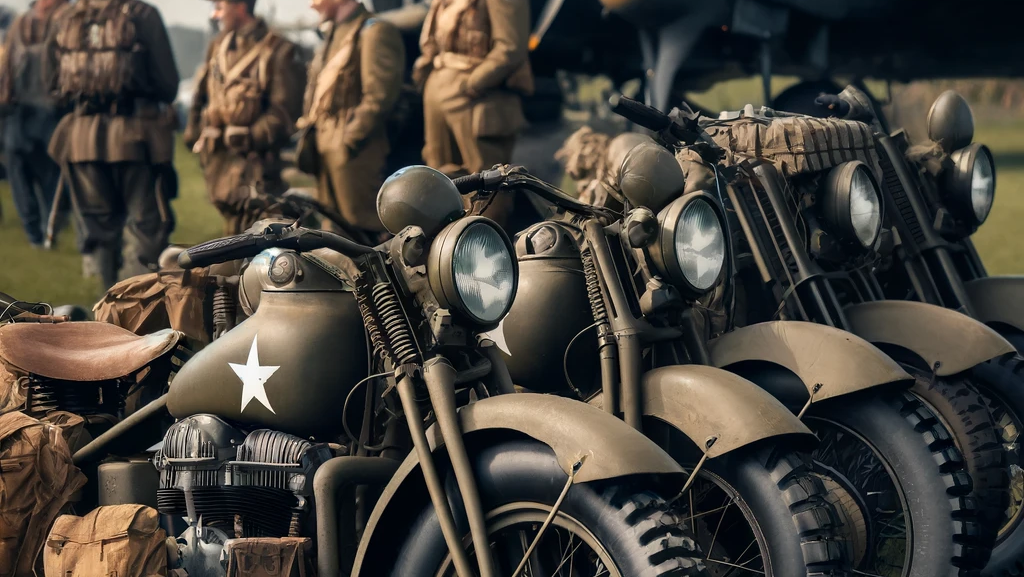VE Day, or Victory in Europe Day, is a momentous occasion celebrated on May 8th each year, commemorating the end of World War II in Europe. As we honor the courage and resilience of those who fought, we also remember the remarkable tools and machines that played crucial roles in the war effort. One such unsung hero is the Royal Enfield ‘Flying Flea,’ a lightweight motorcycle that became a symbol of ingenuity and adaptability. In this blog, we’ll delve into the fascinating story of the ‘Flying Flea,’ exploring its origins, contributions during the war, and enduring legacy.
The Birth of the Royal Enfield ‘Flying Flea’
The Royal Enfield ‘Flying Flea,’ officially known as the Royal Enfield WD/RE, was designed to meet the demands of wartime conditions. The British War Office required a lightweight, reliable motorcycle that could be easily transported and used in diverse terrains. The result was the ‘Flying Flea,’ a 125cc motorcycle that weighed just over 125 pounds, making it light enough to be parachuted into combat zones.
With its compact size and robust construction, the ‘Flying Flea’ quickly became a favorite among paratroopers and dispatch riders. It was designed to be easily disassembled and reassembled, which meant it could be dropped from planes or carried in gliders, providing rapid mobility and communication capabilities in the field.
The ‘Flying Flea’ in Action
During WWII, the ‘Flying Flea’ proved its worth on numerous occasions. It was used extensively by British and Allied forces in various theatres of the war, from the deserts of North Africa to the forests of Europe. Its ability to navigate rough terrains and narrow paths made it invaluable for delivering messages, scouting, and even laying communication cables.
One of the most notable deployments of the ‘Flying Flea’ was during the D-Day landings. Paratroopers carried these motorcycles in gliders and dropped them into Normandy, where they played a critical role in establishing communication lines and maintaining mobility in the chaotic early days of the invasion.
Legacy and Significance
The Royal Enfield ‘Flying Flea’ is remembered not just for its technical achievements but also for its symbolic value. It represented the innovative spirit and resourcefulness that were hallmarks of the Allied war effort. Today, the ‘Flying Flea’ is a cherished piece of military history, with enthusiasts and historians alike celebrating its contributions.
During VE Day celebrations, the ‘Flying Flea’ often takes center stage in parades and exhibitions, reminding us of the ingenuity and bravery that characterized the Allied victory. Restored models of the ‘Flying Flea’ are displayed in museums and collections around the world, preserving its legacy for future generations.
VE Day and the ‘Flying Flea’
VE Day celebrations provide an opportunity to reflect on the many facets of the war effort, including the machines that made victory possible. The Royal Enfield ‘Flying Flea’ is a testament to the role of innovation in warfare and the importance of adaptability and resilience.
In commemorating VE Day, we honor not only the soldiers who fought bravely but also the tools and technologies that supported them. The ‘Flying Flea’ serves as a powerful reminder of the ingenuity that helped secure peace in Europe.
Conclusion
As we celebrate VE Day, let’s take a moment to remember the Royal Enfield ‘Flying Flea’ and its significant contributions to the Allied victory. This lightweight motorcycle, with its remarkable design and versatility, played a pivotal role in some of the most crucial operations of WWII. Its legacy continues to inspire, reminding us of the resilience and innovation that define moments of great historical significance.

